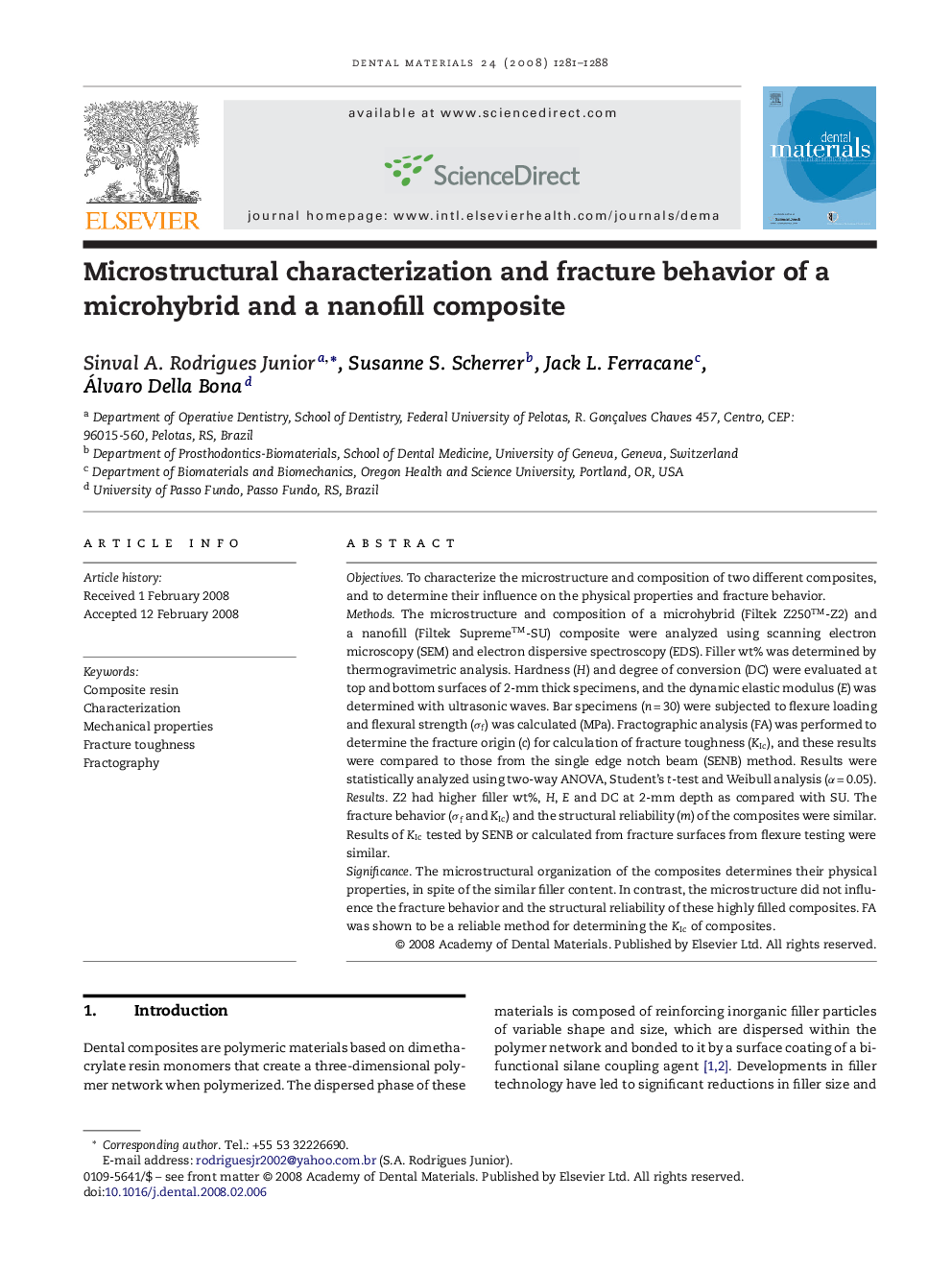| Article ID | Journal | Published Year | Pages | File Type |
|---|---|---|---|---|
| 1422549 | Dental Materials | 2008 | 8 Pages |
ObjectivesTo characterize the microstructure and composition of two different composites, and to determine their influence on the physical properties and fracture behavior.MethodsThe microstructure and composition of a microhybrid (Filtek Z250™-Z2) and a nanofill (Filtek Supreme™-SU) composite were analyzed using scanning electron microscopy (SEM) and electron dispersive spectroscopy (EDS). Filler wt% was determined by thermogravimetric analysis. Hardness (H) and degree of conversion (DC) were evaluated at top and bottom surfaces of 2-mm thick specimens, and the dynamic elastic modulus (E) was determined with ultrasonic waves. Bar specimens (n = 30) were subjected to flexure loading and flexural strength (σf) was calculated (MPa). Fractographic analysis (FA) was performed to determine the fracture origin (c) for calculation of fracture toughness (KIc), and these results were compared to those from the single edge notch beam (SENB) method. Results were statistically analyzed using two-way ANOVA, Student's t-test and Weibull analysis (α = 0.05).ResultsZ2 had higher filler wt%, H, E and DC at 2-mm depth as compared with SU. The fracture behavior (σf and KIc) and the structural reliability (m) of the composites were similar. Results of KIc tested by SENB or calculated from fracture surfaces from flexure testing were similar.SignificanceThe microstructural organization of the composites determines their physical properties, in spite of the similar filler content. In contrast, the microstructure did not influence the fracture behavior and the structural reliability of these highly filled composites. FA was shown to be a reliable method for determining the KIc of composites.
